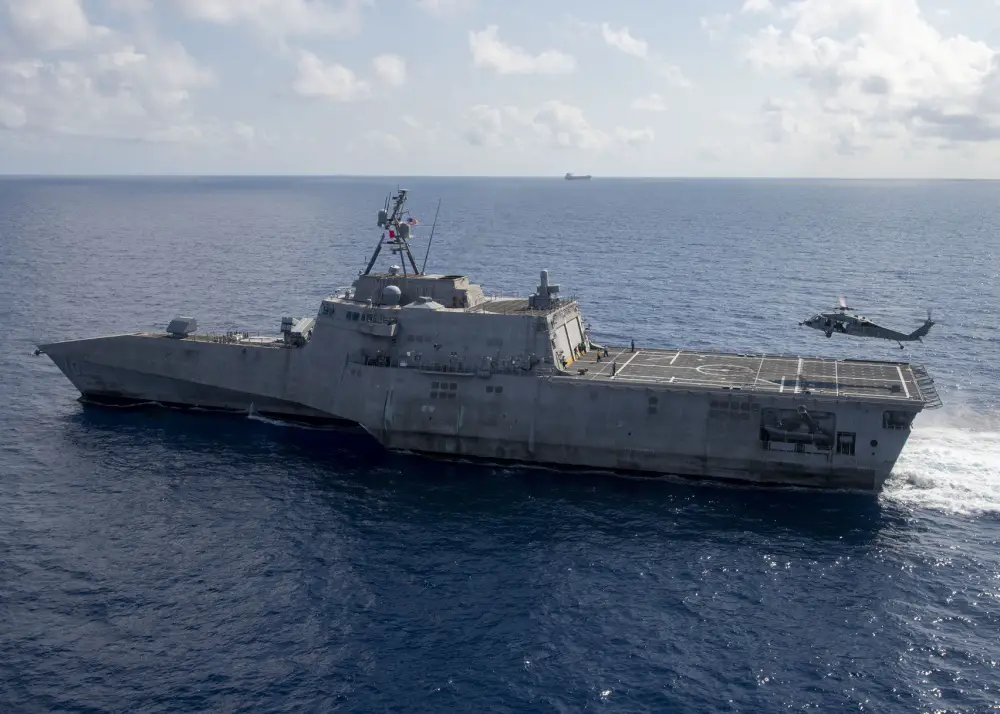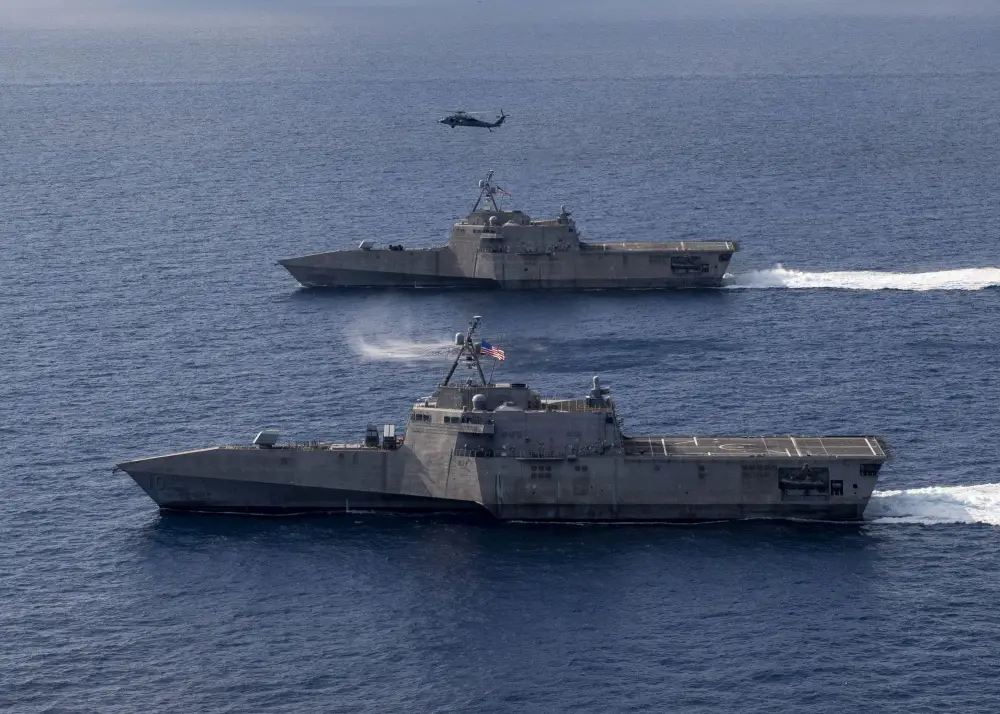With advanced technology, the air detachment aboard Independence-variant littoral combat ship USS Gabrielle Giffords (LCS 10) is an integral part of crew complement, delivering situational awareness and combat capability well beyond ship-based sensors during their rotational deployment to the Indo-Pacific region. A part of the “Wildcards” of Helicopter Sea Combat Squadron (HSC) 23, Air Detachment (Det.) 8 adds an MH-60S Sea Hawk helicopter and two MQ-8B Fire Scout unmanned aerial vehicles (UAVs), all part of a vital war-fighting component providing surveillance and lethal over-the-horizon capability in a critical region.
A Coronado-based expeditionary squadron under Commander, Helicopter Sea Combat Wing Pacific, HSC-23 was the first squadron to deploy a composite MH-60S and radar-capable MQ-8B detachment aboard USS Coronado (LCS 4) during her maiden deployment to the Indo-Pacific in 2014. HSC-23 continues to sustain deployed detachment rotations onboard Independence-variant LCS, to include the entirety of USS Montgomery’s (LCS 8) maiden deployment to the Indo-Pacific from May 2019 to June 2020. Currently embarked on Gabrielle Giffords, Det. 8 continues to lead the efforts of demonstrating the dynamic and integral roles between traditional Navy-manned helicopters and unmanned assets.

Onboard Gabrielle Giffords, Det. 8 and its preceding detachments bring UAV operations to the fleet on a greater scale than ever before. The MQ-8B provides situational awareness and precision targeting support in distributed maritime operations through a manned/unmanned “system of systems” concept. The aircraft can also provide communications-relay and battlespace management beyond visual range to support the tactical commander.
Det. 8 consists of five pilots, four aircrewmen and 16 maintainers or maintenance professionals, with the majority of the detachment consisting of enlisted personnel. The naval aircrewmen control the MQ-8B radar and sensors as well as fly in the MH-60S, operating crew-served weapons and performing search and rescue (SAR) when required.
To date, Gabrielle Giffords has completed high visibility tasking in and around Southeast Asia to include patrols in the South China Sea; presence operation near the Spratly Islands, drillship West Capella, and Chinese survey vessel Hai Yang Di Zhi 4 Hao; integrated operations with USS America (LHA 6); and bilateral exercises with the Japanese Maritime Self Defense Force and Republic of Singapore Navy. Additionally, the MH-60S utilized Hellfire missiles during a sinking exercise as a part of a bilateral event with Republic of Singapore Navy, exercise Pacific Griffin in 2019. Attached to Destroyer Squadron 7, Gabrielle Giffords is on a rotational deployment to the U.S. 7th Fleet area of operations in support of security and stability in the Indo-Pacific.
